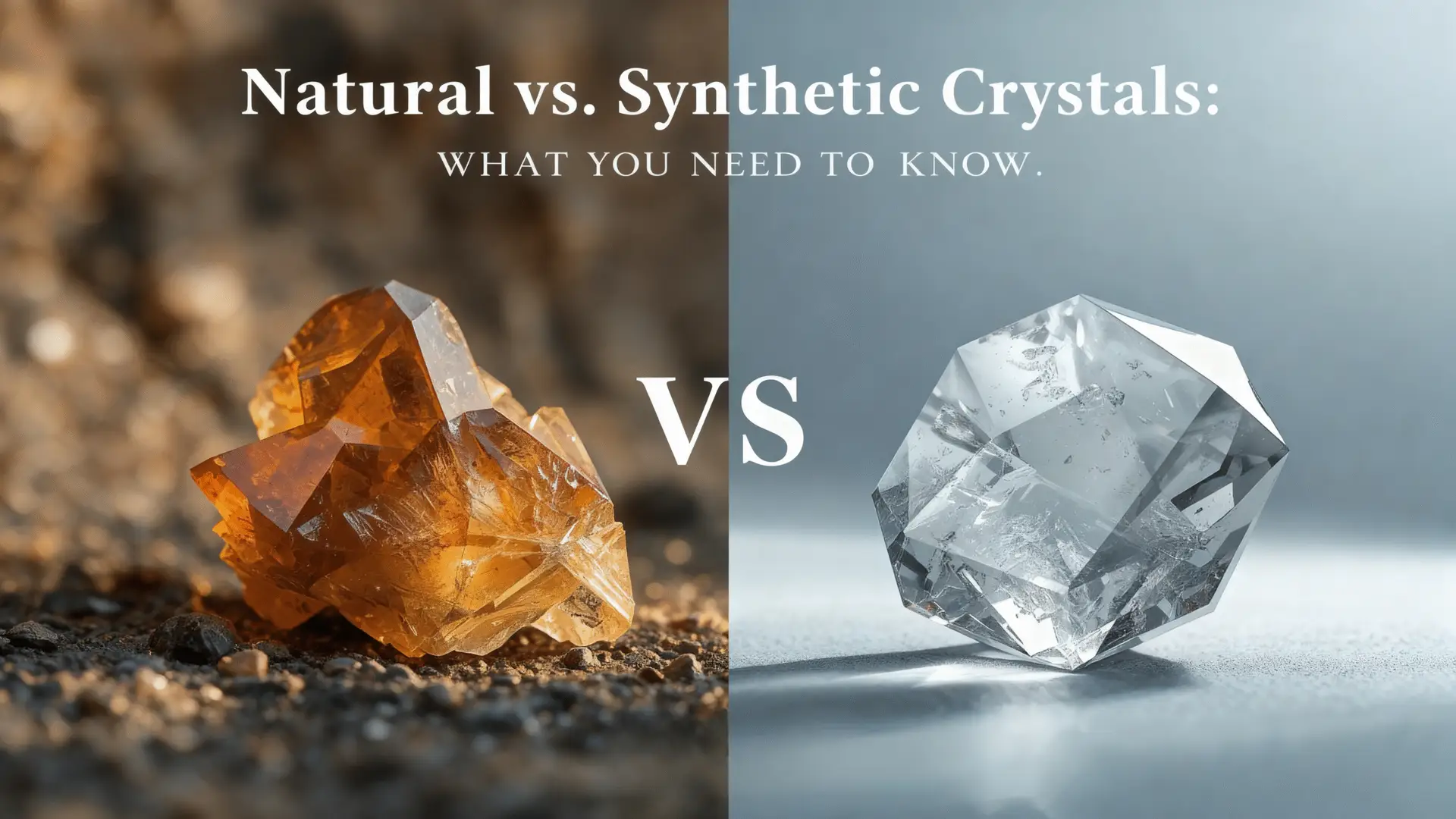Crystals captivate us with their beauty and the stories they carry—whether as jewelry, décor, or personal talismans. But not all crystals are the same. In today’s market, you’ll find both natural crystals formed in the Earth over thousands of years, and synthetic crystals created in laboratories. Both have value, but their differences are important to understand before making a purchase.
What Are Natural Crystals?
Natural crystals are minerals formed through geological processes deep within the Earth. Heat, pressure, and time shape them into the unique stones we admire today. Because each crystal grows under different conditions, no two are exactly alike—tiny inclusions, color variations, and imperfections are part of their natural charm.
Key Features:
- Formed naturally over thousands or millions of years
- Unique inclusions and irregularities
- Often associated with traditional spiritual and healing practices
- Each piece is truly one-of-a-kind
What Are Synthetic Crystals?
Synthetic crystals are created by scientists using controlled conditions in a laboratory. They replicate the molecular structure of natural crystals but can be produced in large quantities with fewer flaws. For example, synthetic quartz or lab-grown amethyst look very similar to natural versions but are generally more affordable.
Key Features:
- Made in labs with advanced technology
- Visually consistent and often flawless
- More affordable and widely available
- Lack the geological history of natural stones
Appearance and Value
- Appearance: Natural crystals often have slight variations and inclusions, while synthetic crystals tend to look more uniform.
- Value: Natural crystals are usually considered more valuable due to their rarity and history, though some high-quality lab-grown crystals can also be costly depending on size and clarity.
- Durability: Both are structurally similar, so they can last equally long if cared for properly.
Energy and Symbolism
For those who use crystals for spiritual or energetic purposes, natural stones are often preferred because they carry the Earth’s history within them. Many believe their unique imperfections enhance their energy. Synthetic crystals, while visually stunning, are sometimes seen as “blank slates”—beautiful but lacking the depth of natural formation.
Which Should You Choose?
It depends on your intention:
- For spiritual or symbolic purposes: Natural crystals may feel more authentic.
- For fashion and everyday wear: Synthetic crystals offer affordability and consistency in design.
- For collectors: Natural stones carry greater rarity and uniqueness.
Final Thought
Both natural and synthetic crystals have their place. One carries the Earth’s timeless story, while the other reflects human ingenuity and accessibility. Understanding their differences helps you choose the crystal that best resonates with your needs—whether you’re seeking energy, beauty, or a mix of both.
-
$89.90 Original price was: $89.90.$69.90Current price is: $69.90.
-
$99.90 Original price was: $99.90.$79.90Current price is: $79.90.
-
$99.90 Original price was: $99.90.$79.90Current price is: $79.90.
-
$99.90 Original price was: $99.90.$79.90Current price is: $79.90.
-
$99.90 Original price was: $99.90.$79.90Current price is: $79.90.
-
$119.90 Original price was: $119.90.$99.90Current price is: $99.90.
-
$79.90 Original price was: $79.90.$59.90Current price is: $59.90.
-
$119.90 Original price was: $119.90.$99.90Current price is: $99.90.
-
$119.90 Original price was: $119.90.$99.90Current price is: $99.90.
-
$89.90 Original price was: $89.90.$69.90Current price is: $69.90.
-
$89.90 Original price was: $89.90.$69.90Current price is: $69.90.
-
$99.90 Original price was: $99.90.$79.90Current price is: $79.90.
![]()
